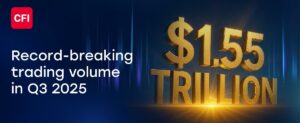As global markets start to buckle under the strain of US bond yields staying higher for longer, the Federal Reserve may reverse its ongoing quantitative tightening (QT) and resort to liquidity injections by either May or June next year to avert major disruptions in the global financial system, Neelkanth Mishra, chief economist, Axis Bank, said in an interview to Gayatri Nayak and Bhaskar Dutta. Edited excerpts:
What is your view on global liquidity in view of the strong strides towards QT that the Fed has taken? When can we expect any change in the RBI’s management of domestic liquidity?
Once the RBI feels comfortable that now the Fed will keep easing for a while, it will allow them to go easier. When that happens is a much tougher question. My sense is the late second quarter of the calendar year 2024. So, maybe a May-June timeframe. By then, we should start to see some stresses showing up. There are some indicators; we have started seeing shortages in dollars outside the US. But for things to reach a point where the Fed is forced to intervene again could be in May or June.
There are structural factors that are likely to keep US bond yields higher than they were in the past decade. How would that impact capital flows into India and the current account deficit (CAD)?
I think the impact on the CAD may be lower than the impact on capital flows. The problem on a run-rate basis is much greater on the capital flow-side because whenever this happens, the outflows happen – effectively, people are stampeding out. While the full-year number may still be stabilised, there will be two, three months of problems and then the Fed will start easing and capital flows will come rushing back. But for that two-to-three-month period, the impact of capital outflows can be quite substantial on an annualised run-rate basis. They could be $70-$80 billion. That’s what I worry about when the US goes into recession. Given the abrupt jump in risk-free rates across the globe, what is your outlook for Indian equity valuations?
After 2008-09, when the US adopted the tight fiscal, loose monetary policy model, the base PE (price/earnings) expectation for the Nifty as a whole moved up from about 13 to 14 times to 18 to 20 times.
I remember in 2010, if you recommended consumer staples stock at 40 times earnings, you would get shouted at by fund managers – it was too expensive. Over a period of time that 40 became 45, then 50, and now, you have analysts who think that a stock which used to be at 80 times earnings is now at 70 times earnings. So, it’s cheap.
This has happened worldwide. Globally, the wealth-to-GDP ratio went up from about 3.7 times in 2010-11 to 4.9 times in 2021.
Wealth is the present discounted value of all the income that the asset can give. And so, the ratio will only go up if your future growth expectations are rising, or your discount rate is falling. These are the only two variables.
What happens when the global growth outlook is shaky, and rates are higher?
Given that growth in the next decade is expected to be far lower than growth in the previous decade at a global level, the only reason why wealth-to-GDP went up was because of low interest rates. So, it is reasonable to expect that at a global level, I think the PE multiples will correct. And India’s PE multiples are also likely to correct despite the remarkably steady inflows that we are seeing in domestic mutual funds. I expect that 18-20 times can become 16-17 times. It will not happen in one shot. Over the next two to three years as markets wake up to the fact that US rates are not going to come off, and therefore, the risk-free rates are going to be high, I think that will automatically bring down the target PE multiples.










